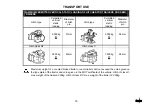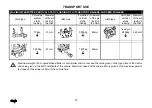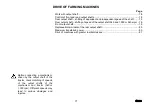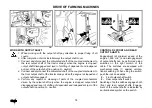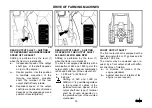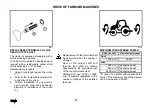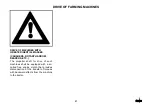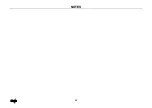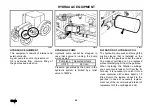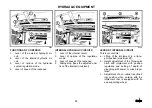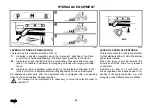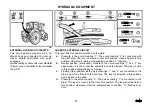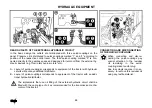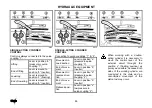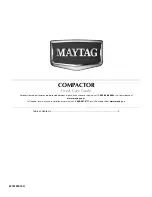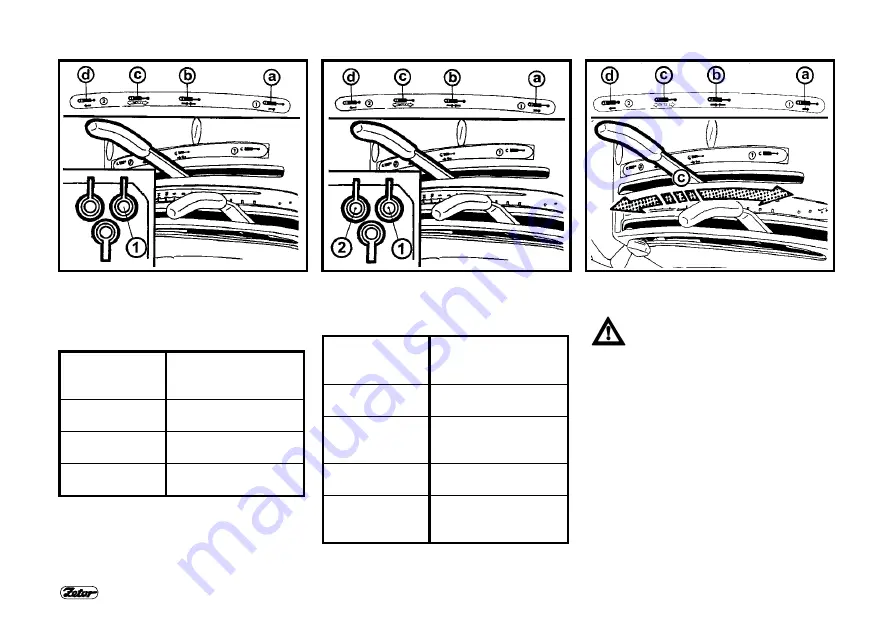
89
HYDRAULIC EQUIPMENT
E414 E415 E416
SINGLE-ACTING CYLINDER
CONTROL
Control is always connected to the quick-
coupling “1”.
Lifting
Lever in position “a”
(pressure in quick-
coupling “1“)
End of lifting
Lever is moved to
position “b“ (neutral)
Lowering
Lever is moved to
position “c“ (floating)
End of lowering
Lever is moved to
position “b“ (neutral)
DOUBLE-ACTING CYLINDER
CONTROL
Connection to quick-couplings “1“ & “2“.
Movement in
one direction
Lever in position “a“
(pressure in quick-
coupling “1“)
End of move-
ment
Lever in position “b“
(neutral)
Movement in
reverse direc-
tion
Lever in position “d“
(pressure in quick-
coupling “2“)
End of move-
ment
Lever in position “b“
(neutral)
Relieved posi-
tion
Lever in position "c"
low pressure in
quick-coupling “2”)
When working with a double-
acting cylinder it is necessary to
move the control lever of the
external circuit throught the
position „c“ (floating position) as
quicky as possible, because both
sides of the working cylinder are
connected to the drain and an
uncontrolled movement of the
piston rod may occur.
Summary of Contents for Proxima Plus 105
Page 1: ......
Page 2: ......
Page 7: ...7 LOCATION OF SERIAL NUMBERS G2...
Page 18: ...18 NOTES...
Page 34: ...34 GETTING TO KNOW THE TRACTOR E131...
Page 36: ...36 GETTING TO KNOW THE TRACTOR E132...
Page 48: ...48 NOTES...
Page 68: ...68 NOTES...
Page 82: ...82 NOTES...
Page 102: ...102 NOTES...
Page 114: ...114 NOTES...
Page 140: ...140 NOTES...
Page 160: ...160 NOTES...
Page 195: ...195 NOTES...
Page 197: ......

